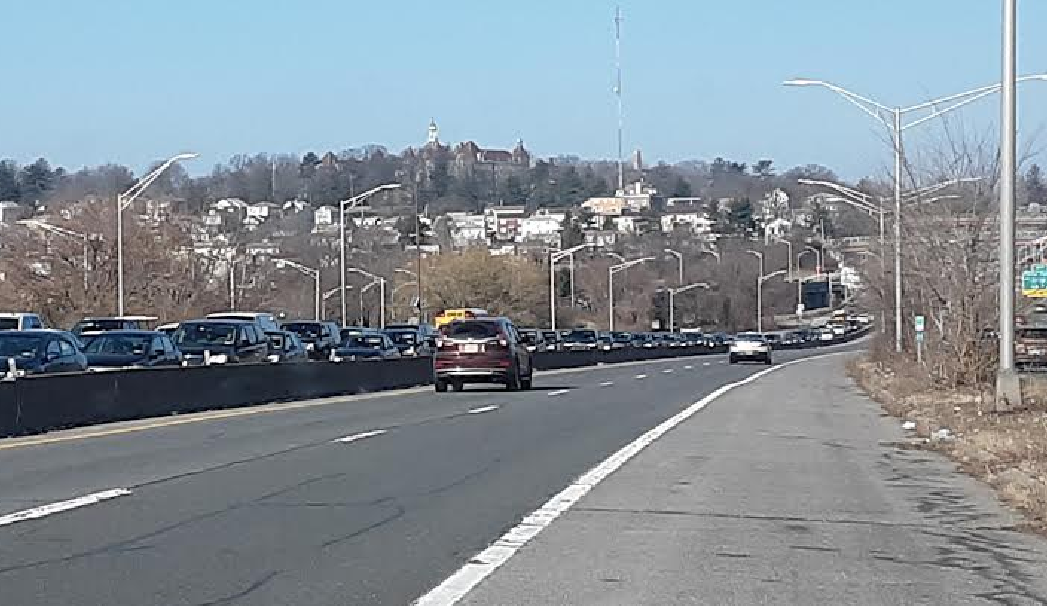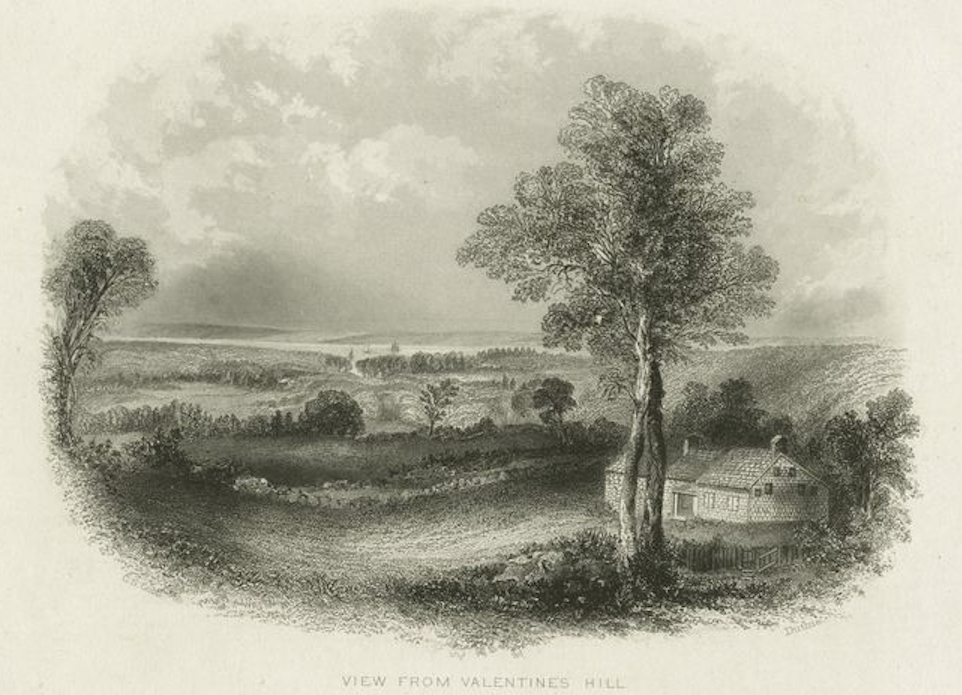Home › Forums › The American Revolution › Valentine Hill and the Grand Reconnaissance
Tagged: revolution
- This topic has 3 replies, 3 voices, and was last updated 2 years, 1 month ago by
Peter Ostrander.
-
AuthorPosts
-
-
March 10, 2022 at 5:44 pm #2698
I am getting excited about the event we have coming up next week on Wednesday at 4 PM (sorry for the time of day but it is the only one that worked for the presenters and the site).
One reason to be excited is the venue. The campus of St. Joseph’s Seminary in Yonkers is lovely but also historic and relevant to the topic of the Grand Reconnaissance. If you are unfamiliar with the site, perhaps while driving west on the Cross County Parkway, you have noticed the tall buildings on the hilltop center left. That’s it:

Here is a historic view from Valentine’s Hill:

During the American Revolution, the hill was the home of the Valentine family but, more importantly, was a frequent staging area for armies on the move. The patriots were there after fleeing NYC in 1776. The British were there in 1778 and 1779 and for a time it was the front line between the armies. In July of 1781, the combined French and American armies came south from Westchester on different roads and came together at Valentine Hill before marching to Kingsbridge for the Grand Reconnaissance of British positions on Manhattan.
The other reasons to be excited are the speakers. Dr. Iris de Rode is revealing and interpreting never-before-translated French documents concerning the Grand Reconnaissance. Dr. Erik Weiselberg is telling the story of the local guides that aided the Patriots and French as they tried to find their way around The Bronx. And I will speak about places and events in Riverdale, Kingsbridge, Spuyten Duyvil, and The Bronx. I hope to see you there but hit me up if you need the Zoom link.
On a related note, do any members speak French and would be willing to translate something short for me that was written by a French officer?
-
March 10, 2022 at 6:41 pm #2699
Yup, I’m a fluent French speaker! Happy to help.
Scott Ahearn
-
March 17, 2022 at 4:28 pm #2704
Thank you to all who showed up or joined on Zoom yesterday afternoon.
I have just added a gorgeous map to the “Maps” page of the website that was featured in yesterday’s presentation. It was drawn by a French mapmaker based on observations of Spuyten Duyvil, Kingsbridge, and Northern Manhattan. Here is a direct link. Click on the thumbnails on the left and use the slider on the bottom to zoom in.
It was among the papers discovered in the tower of the Chateau de Chastellux and was sold to raise money to maintain the castle. $275,000… not bad!
In my presentation, I was asked just how close the cannon balls came to hitting Washington while he was conducting his reconnaissance from Spuyten Duyvil. Here is a relevant quote that I didn’t have handy at the time, by Friedrich Reinhard, who was with Washington and the French Officers during the Grand Reconnaissance:
The Hessian and Ansbach soldiers . . . fired at our generals who were standing on an elevation. A horse was tethered about 30 paces away. A cannonball hit the ground near its hooves which drove the horse quite wild. Not long after this one, another cannonball hit into soft earth close behind the generals, so that clods shot up very high. A third one flew past them…
Washington, who was not lacking in bravery, would on principle, not have positioned himself in this manner, if he had been alone, in my opinion. But since he was forced into this bravado, it seemed that on purpose he stood with his side towards the enemy, in order to present a narrower front.
-
March 20, 2022 at 12:24 pm #2705
Regarding the cannon balls fired in Amer Rev. Unlike to day’s cannon the velocity of those used in Amer Rev were slower but still deadly.
At a distance those soldiers who were being fired at could actually see the cannon balls almost like slow motion. Many times they could not get out of the way as they were still traveling very fast. There is a good description of cannon fire in the book, The Day is Ours by William Dwyer and the battle of Trenton. He describes the American troops shooting cannon balls down the streets of Trenton at the Hessian’s with cannon balls bouncing and taking off heads and legs of those in the line of fire. It is also shown similarly and graphically in Mel Gibson’s move, The Patriot much of which was based on historical facts. It has a scene showing cannon fire in an open field and cannon balls bouncing and hitting soldiers. Here is a link to the movie scene. Please be aware it’s rather graphic.
-
-
AuthorPosts
- You must be logged in to reply to this topic.